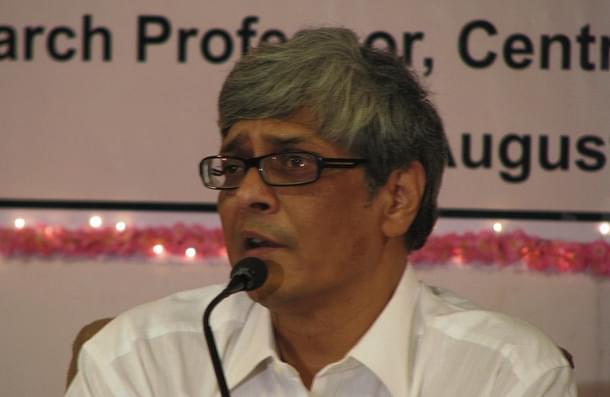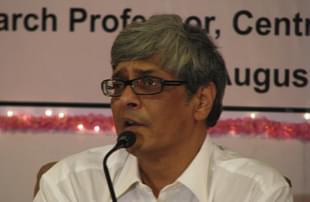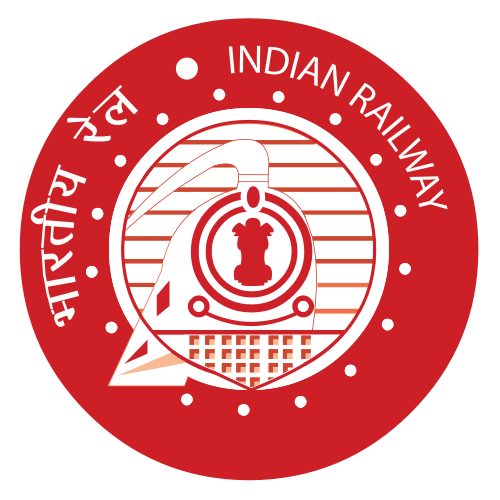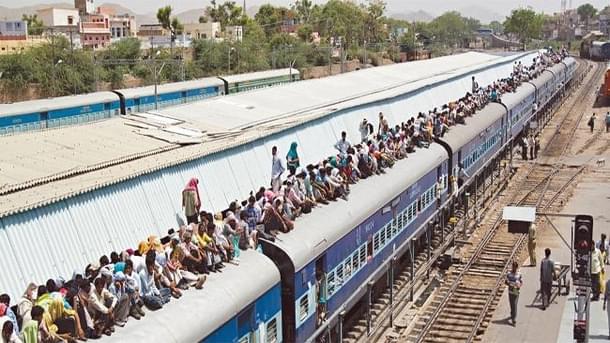Columns
Railways: Choice and Competition - XIII
Bibek Debroy
Feb 22, 2015, 11:30 AM | Updated May 02, 2016, 10:31 PM IST
Save & read from anywhere!
Bookmark stories for easy access on any device or the Swarajya app.


The usual caveat applies.
There are several weaknesses in the Indian Railways (IR) system and many have become worse over time. One of these is in the area of making investment decisions. First, there is a scarcity of resources, true not just of IR, but the government system in general. Revenue expenditure is so high that there is nothing left for capital expenditure. As citizens, at the time of the Railway Budget, we gauge this from what is called the operating ratio (OR). The OR is the ratio of working expenses to gross earnings. There is no ideal OR, so to speak. Something like 75% would be comfortable. It hovers at more than 90% now. Every time the OR declines, along comes a Pay Commission and knocks it for a six.
In the present system, if there is a Pay Commission award, IR can’t go against it. There is nothing much you can do about reducing revenue expenditure in the short-run. The bulk consists of wages and other allowances, pensions and fuel (diesel and electricity). There is a little bit of flexibility about dividends and DRF (depreciation reserve fund), providing a little bit of flexibility to any Railway Minister to do some statistical jugglery.
The relationship between the Union government’s finances and Railway finances have never been cleaned up, despite the Acworth Committee and the creation of the Railway Budget in 1924. You may be surprised. But with the exception of a separate Railway Budget, none of the other major recommendations of the Acworth Committee were ever implemented.

Every year, IR receives GBS (gross budgetary support) from Union government and in turn, pays dividends to the Union government. These aren’t dividends in the corporate sense at all. Effectively, the Union government has granted IR a loan in perpetuity and dividends are repayment of interest on that loan. (The principal is never repaid and keeps building up.) Normally, you would expect depreciation to be calculated in some objective fashion. That’s not how DRF works. It is a completely arbitrary figure and IR always under-provides for depreciation. Hence, if you want to show a healthier OR, slash DRF. DRF becomes a residual, after you have determined the desired OR. If you can, slash dividends too, thus making OR look more respectable. This is what I meant by a limited amount of statistical jugglery being possible. When the GBS is provided, it is sometimes meant for specific projects. IR doesn’t have complete flexibility in deciding what that money is going to be spent on. To state it differently, a part of the GBS is tied.
With these qualifications, there is a long list of projects that are awaiting completion. You may have heard about a Rs 5 lakh crore figure of pending projects. That is indeed roughly right and some (not all) of these are on doubling, new lines, gauge conversion, signalling and telecommunications, workshops and electrification. Given scarcity of resources, a natural question to ask is – which of these are priority items? How do you determine priority? How do you decide whether available resources are best spent on doubling tracks or on new lines? Is a ROR (rate of return) ever calculated?
Unfortunately, though systems are improving, it is all very hazy and arbitrary. On the face of it, projects can be remunerative, or they can be unremunerative. I have used those terms, though “remunerative”, as an expression, is relative and subjective. Some projects are certain to be unremunerative. Examples are lines in the North-East, or those important for defence/strategic purposes. They aren’t expected to be commercially viable. In such cases, GBS support should be available from Union government for these lines. On can also think of unremunerative suburban projects, where such financial support should come from State governments. Today, Union government does provide GBS. But that’s only on the capital expenditure. Ideally, the operating losses should also be subsidized by the Union government, or State governments, as the case may be.
This leaves remunerative projects. This should mean that the ROR should be greater than the cost of borrowing. (Though IR can’t borrow directly, it can do so through IRFC). That’s not what happens at all. ROR calculations are extremely arbitrary. They are never quite validated. By validated, I simply mean that one should be able to go with a detailed project report to a bank or financial institution, show the calculations and ask for a loan. The project should be bankable, so to speak. This discipline is completely missing in IR, at least today. There are indeed ROR calculations. Subsequently, when the project does materialize, the ex post ROR (if it is at all calculated) is completely different from what the ex ante or anticipated ROR was. That’s one (not the only) reason why project implementation is in such bad shape.

It has become marginally better, with a priority listing of projects. A1 category projects are those of national importance, identified in this way by the Union government, with partial or complete budgetary support. A2 are such projects at the State-level, where States have agreed to share the costs. A3 reflects IR’s priority list. These are projects IR regards as critical. A4 is also an IR list, medium critical projects. A5 represents important projects, B other projects and C least important projects. Stated thus, B and C should be immediately junked, even if there are sunk costs.
Sometimes, projects get delayed because of land acquisition problems, issues connected with forests and environments and even law and order issues, not to forget litigation. But the limited point I wanted to make is that IR systems today lack basic principles of investment appraisal. How do I decide whether to spend on doubling or signalling? At the risk of annoying my friends in the Railways, here is the rule of thumb that is now followed. As I have said, A1 and A2 belong to a different category. After taking away resources that are tied to specific projects in some sense, there is some amount of untied money available to IR for investments. This now is apportioned out among the Members on the Railway Board, reflecting the portfolios they represent. Thus, this amount for signalling, that amount for workshops and this amount for tracks. Across Board Members and their portfolios, the ratio is almost the same from year to year. It is only the absolute amount that varies, depending on resources available. I have caricatured a bit and been harsh. However, what I have said isn’t untrue.
Bibek Debroy is a noted Economist. His 10-volume translation of The Mahabharata is one of the most seminal works in contemporary Indology. He was a member of the Swarajya Advisory Board.





